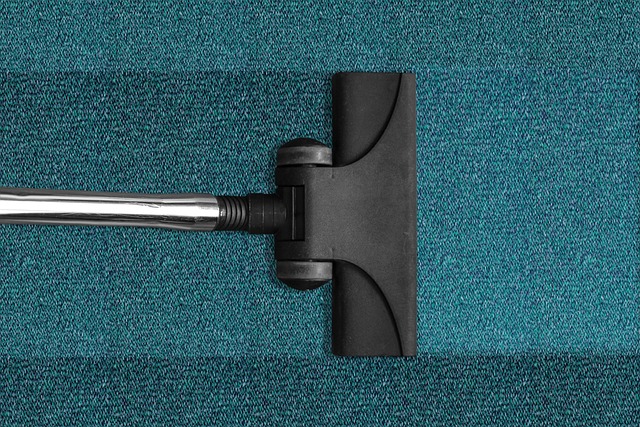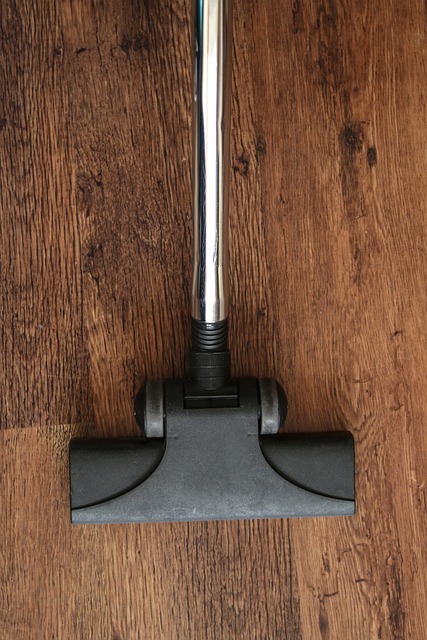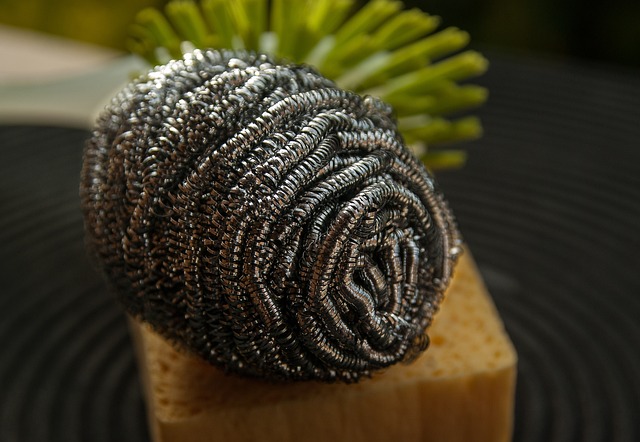Understanding pet stains' unique compositions is key to effective eco-friendly pet stain cleaning. Traditional methods use harsh chemicals, but natural ingredients like baking soda, vinegar, and lemon juice provide safe alternatives. These options are cost-effective, easy to use, and environmentally friendly, reducing plastic waste. Tailoring cleaning approaches to surface types and training pets to prevent accidents further supports sustainable practices. Future innovations in eco-friendly products and fiber technology promise a greener, cleaner future for both pets and the environment.
Looking to keep your home spotless while being kind to the environment? Eco-friendly pet stain cleaning is a growing trend, not just for sustainability but also for effective, natural solutions. This comprehensive guide dives into the world of pet stains, exploring their causes and types. We’ll uncover the impact of traditional methods on the planet, highlight eco-conscious alternatives using natural ingredients, offer sustainable product recommendations, share expert cleaning techniques, and provide tips to train your pets to avoid accidents. Get ready to tackle pet stains with a greener approach!
Understanding Pet Stains: Types and Causes

Understanding pet stains is the first step in effective eco-friendly pet stain cleaning. These stains can come from various sources, including urine, feces, vomit, and even tracking in dirt and debris. Each type of stain has its own unique composition, which affects how best to clean it.
Urine stains, for example, often leave a strong odor and can be particularly challenging to remove without the right approach. Fecal stains not only carry unpleasant odors but also pose health risks due to potential pathogens. Vomit stains require careful handling to avoid spreading bacteria and causing further damage to fabrics or floors. Additionally, tracking in dirt and debris can lead to visible pet stain cleaning challenges, as these substances can quickly set into carpets, upholstery, and other surfaces.
The Impact of Traditional Cleaning Methods on the Environment

Traditional cleaning methods, while effective in removing pet stains, often rely on harsh chemicals that can have detrimental effects on the environment. The ingredients found in many commercial stain removers and cleaning products are not just harmful to aquatic life but can also persist in soil and water for extended periods, contributing to long-term pollution.
These conventional approaches not only pose risks to local ecosystems but also add to the growing problem of plastic waste. Many cleaning products come in single-use containers, leading to increased plastic pollution. In contrast, eco-friendly pet stain cleaning offers a sustainable alternative by utilizing natural ingredients and methods that are safe for both your pets and the planet.
Eco-Friendly Alternatives: Natural Ingredients for Stain Removal

When it comes to eco-friendly pet stain cleaning, natural ingredients offer a safe and effective alternative to harsh chemicals. Common household items like baking soda, vinegar, and lemon juice are powerful stain removers that are gentle on both your pet’s fur and the environment. Baking soda acts as a natural abrasive, lifting stains from the surface, while vinegar’s acidity helps to break down and remove odors. Lemon juice is packed with antioxidants and contains citric acid, making it an excellent cleaner and deodorizer.
These natural remedies not only clean but also condition your pet’s coat, leaving it feeling soft and shiny. They are cost-effective and easy to use, making them ideal for regular pet stain cleaning routines. By opting for eco-friendly alternatives, you contribute to a greener lifestyle while keeping your furry friend looking their best.
Choosing Safe and Sustainable Pet Care Products

When it comes to pet stain cleaning, selecting safe and sustainable products is a responsible choice for eco-conscious pet owners. Opting for natural, non-toxic cleaners ensures both your pet’s well-being and the protection of the environment. Many commercial pet care products contain harsh chemicals that can be harmful if ingested by pets or released into the ecosystem.
By choosing eco-friendly alternatives, you can effectively manage pet stains while minimising your environmental footprint. Look for products certified as organic and free from synthetic ingredients. Biodegradable formulations are a great option as they break down naturally without leaving behind toxic residues. These sustainable choices not only benefit your home but also contribute to a greener planet, making pet stain cleaning a breeze with a clear conscience.
Effective Cleaning Techniques for Different Surfaces and Fabrics

When it comes to pet stain cleaning, different surfaces and fabrics require unique approaches for effective removal. For instance, treating a pet stain on a carpet involves a different process than cleaning a similar stain from hardwood floors or furniture upholstery. Carpet fibers can trap and hold onto pet messes, necessitating the use of specialized carpet cleaners and spot treatments that dissolve stains without damaging the material. On the other hand, hard surfaces like tiles, linoleum, or vinyl flooring may only require a simple mixture of warm water and mild detergent to effectively lift and remove pet stains.
When dealing with fabric upholstery or clothing, it’s crucial to identify the material before selecting an appropriate cleaning method. Natural fabrics like cotton or linen can be treated with gentle, eco-friendly cleaners that use plant-based enzymes to break down pet messes. Synthetic materials may require specific spot treatments designed for their composition to avoid discoloration or damage. Always test any cleaning solution in a hidden area first to ensure it won’t affect the fabric’s color or texture before applying it to visible stains.
Tips for Training Your Pets to Prevent Staining Accidents

Training your pets to prevent staining accidents is a proactive approach that complements eco-friendly pet stain cleaning practices. Start by understanding your pet’s behavior and instincts, such as their preference for certain textures or scents that might lead to accidents indoors. Regularly scheduled outdoor breaks are crucial, especially for dogs, so they learn the correct place for eliminating waste. Positive reinforcement techniques work best; reward them with treats and praise when they do their business outside.
Create a consistent routine by feeding your pets at fixed times each day, as regular meals often lead to more predictable elimination patterns. Keep an eye on them during house training periods, offering gentle guidance and quick cleanup with eco-friendly pet stain cleaners when necessary. Consistency is key; be patient and persistent, and your pets will learn to hold it in until they reach their designated outdoor spot, reducing the likelihood of indoor accidents and the need for frequent cleaning.
Home Remedies for Common Pet Stains

When it comes to pet stain cleaning, many people turn to home remedies as a cost-effective and eco-friendly alternative to commercial products. For common pet stains like urine or feces, a mixture of equal parts water and white vinegar is an excellent choice. This natural cleaner effectively breaks down the odor and stain without leaving harsh chemicals behind.
For more stubborn stains, baking soda can be a game-changer. Creating a paste with baking soda and water and gently rubbing it into the affected area before letting it sit for 15-20 minutes can help lift even deep-set dirt and odors. After allowing the paste to set, simply brush it off and clean the area with warm water. These simple home remedies not only save you money but also contribute to a greener environment by reducing exposure to potentially harmful chemicals often found in commercial pet stain cleaning products.
The Future of Sustainable Pet Stain Cleaning: Innovations and Trends

The future of pet stain cleaning is looking increasingly green as consumers demand more sustainable solutions for their furry friends’ mishaps. Innovations in eco-friendly products and technologies are reshaping the industry, offering effective yet gentle alternatives to traditional chemical-laden cleaners. One prominent trend is the shift towards natural ingredients, such as plant extracts and essential oils, which not only provide powerful cleaning action but also leave a fresh, non-toxic scent.
Additionally, advancements in fiber technology and fabric treatments are allowing for the creation of stain-resistant fabrics, prolonging the need for frequent cleaning. Smart home devices and apps are another exciting development, enabling pet owners to monitor and manage their pets’ health and hygiene remotely, while also providing real-time alerts for potential stain incidents. These trends collectively point towards a more sustainable and efficient future in pet stain cleaning, ensuring both happy and healthy pets as well as a cleaner, greener environment.
